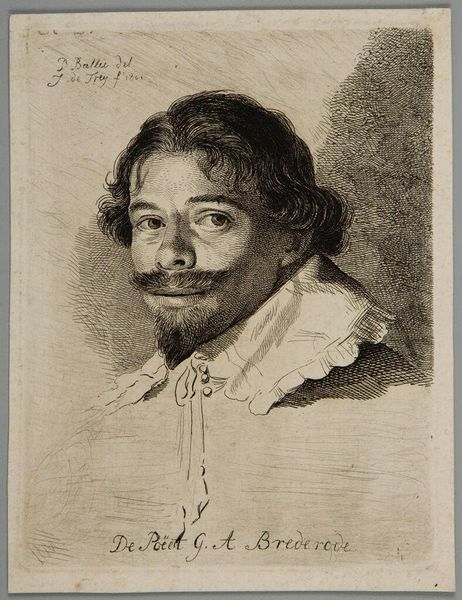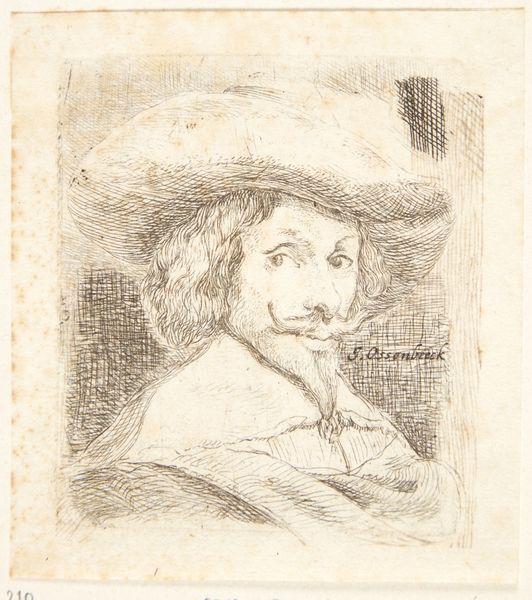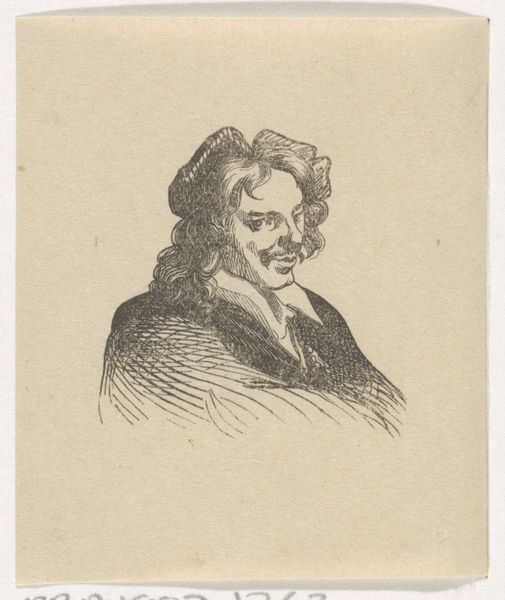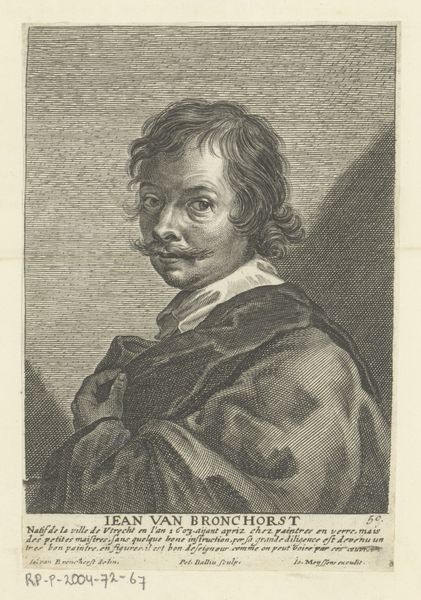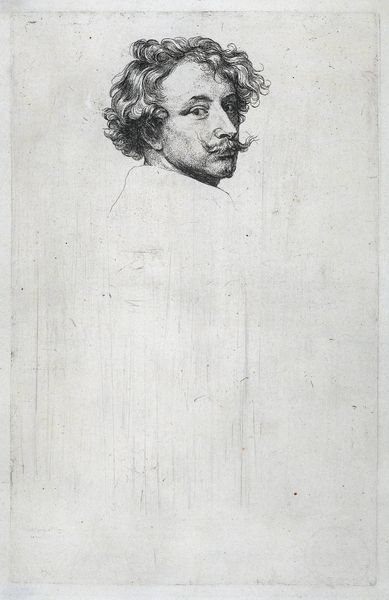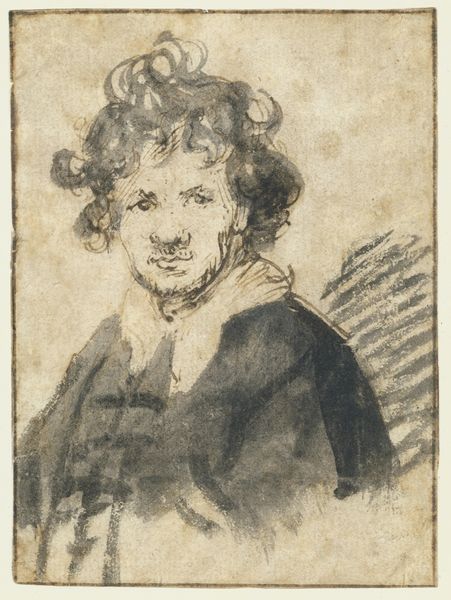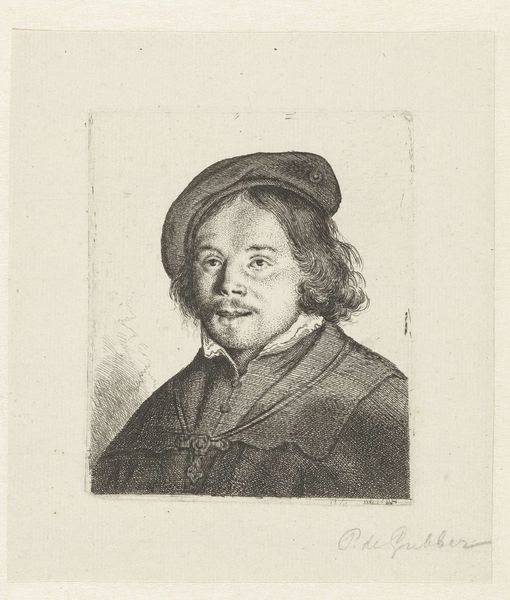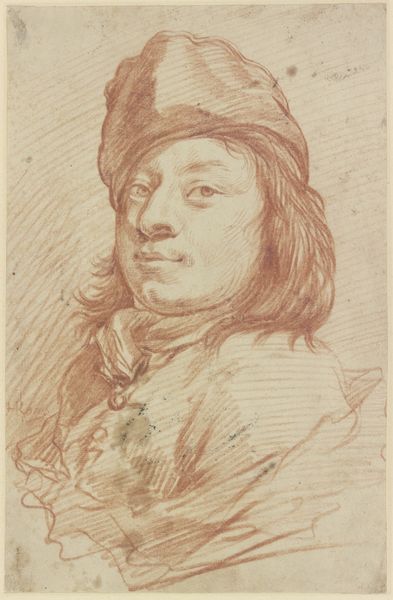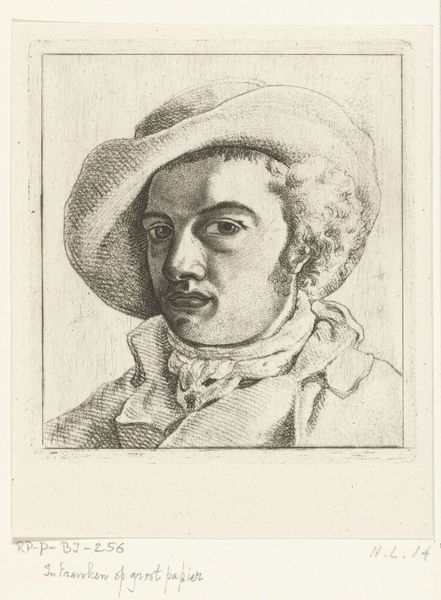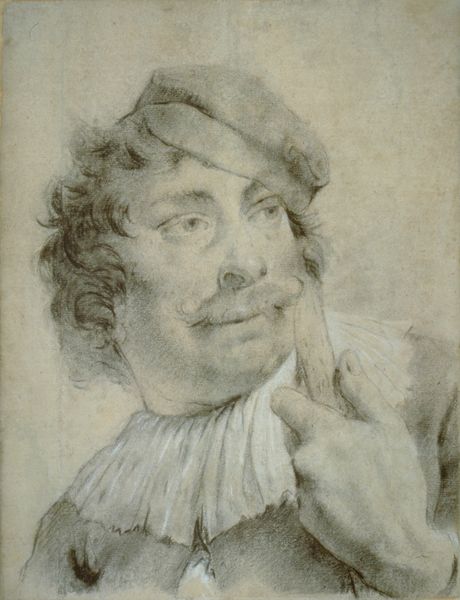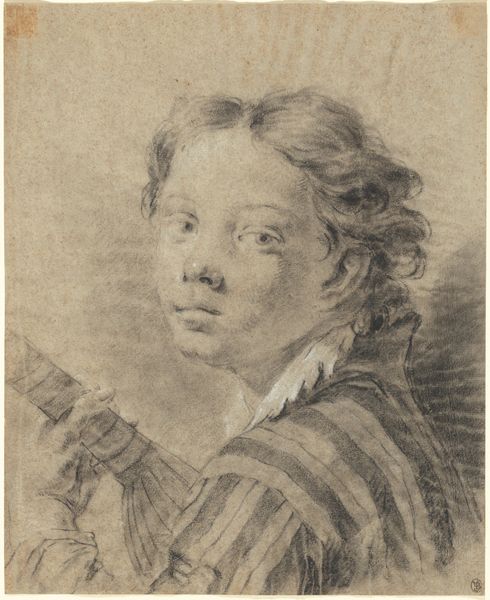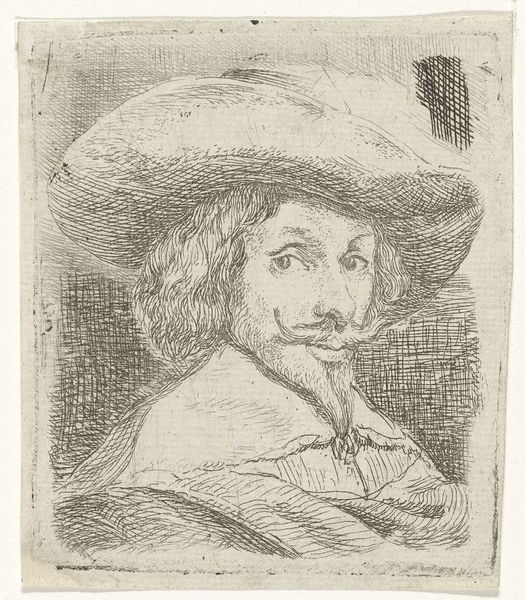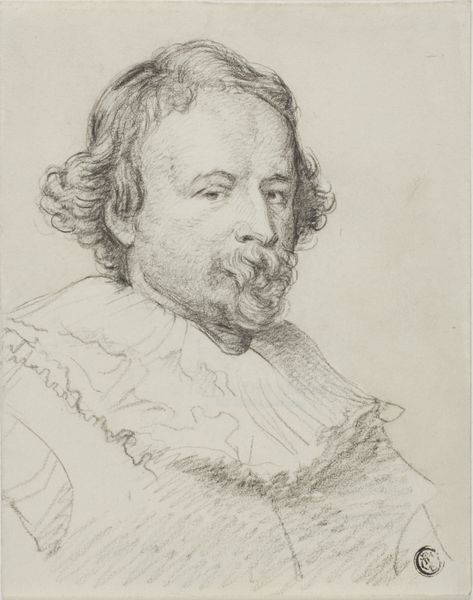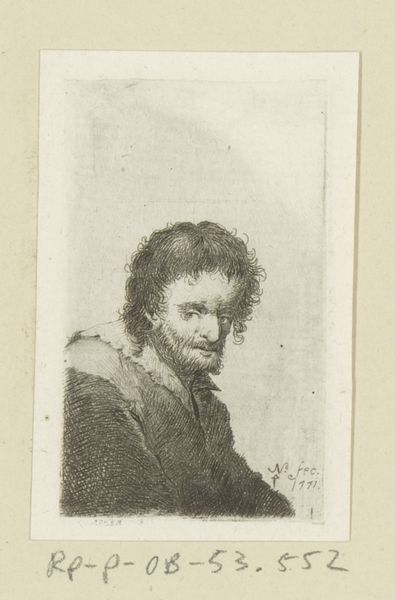
drawing, charcoal
#
portrait
#
drawing
#
baroque
#
charcoal drawing
#
portrait drawing
#
genre-painting
#
charcoal
Dimensions: height 164 mm, width 122 mm
Copyright: Rijks Museum: Open Domain
Editor: Here we have David Bailly's self-portrait, created in 1626. It's a charcoal drawing currently held at the Rijksmuseum. I am really intrigued by his eyes; the portrait's intense gaze and rather loose charcoal lines convey a tangible sense of the artist's presence. What stands out to you, especially given its stylistic choices? Curator: Focusing on the formal elements, the contrast between the tightly rendered facial features and the more loosely sketched hair and background is quite striking. Consider how Bailly employs chiaroscuro to model the face, creating depth and drawing the viewer's eye directly to his expression. It begs the question of what this compositional choice achieves. Editor: It definitely directs the eye! So, is it the balance of precise detail versus the unfinished parts, almost, that define the artwork's effect? Curator: Precisely. Look at how the crisp lines of the ruff collar contrast with the blurred strokes behind the head. These opposing forces enhance the dynamic interplay between presence and absence, immediacy and memory. There is also an interesting surface tension, where areas of intense black charcoal juxtapose with lighter shaded washes. Editor: The strategic deployment of texture is clear now. It really isn't just a likeness; it uses those textures and tonal contrasts to guide how we read the overall composition. Thank you for highlighting that! Curator: Indeed. Observing these relationships closely reveals how a drawing surpasses mere representation. This particular combination helps illustrate how structural interplay significantly shapes our perceptual experience.
Comments
No comments
Be the first to comment and join the conversation on the ultimate creative platform.
